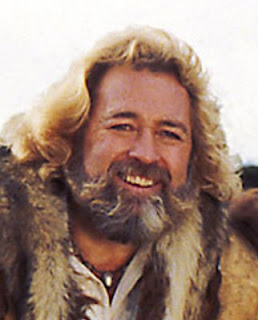
Photo: Justin Townes Earle from Tuesday night's show at the Mill in Iowa City. Earle played a show with a style similar to what might have been found decades ago in the West.
Below you will find one of my favorite Bob Dylan songs since I was like 17. I did not realize it when I first heard it in high school that its actually a cover of a real Gold Rush song. Note the similarity in themes of topics we have discussed in Deadwood, including violence, alcohol use and etc.
I'm old Tom Moore from the bummer's shore in that good old golden days
They call me a bummer and a ginsot too, but what cares I for praise ?
I wander around from town to town just like a roving sign
And all the people say, "There goes Tom Moore, in the days of '49"
In the days of old, in the days of gold
How oft'times I repine for the days of old
When we dug up the gold, in the days of '49.
My comrades they all loved me well, a jolly saucy crew
A few hard cases I will recall though they all were brave and true
Whatever the pitch they never would flinch, they never would fret or whine
Like good old bricks they stood the kicks in the days of '49
In the days of old, in the days of gold
How oft'times I repine for the days of old
When we dug up the gold, in the days of '49.
There was New York Jake, the butcher boy, he was always getting tight
And every time that he'd get full he was spoiling for a fight
But Jake rampaged against a knife in the hands of old Bob Stein
And over Jake they held a wake in the days of '49
In the days of old, in the days of gold
How oft'times I repine for the days of old
When we dug up the gold, in the days of '49.
There was Poker Bill, one of the boys who was always in a game
Whether he lost or whether he won, to him it was always the same
He would ante up and draw his cards and he would you go a hatful blind
In the game with death Bill lost his breath, in the days of '49
In the days of old, in the days of gold
How oft'times I repine for the days of old
When we dug up the gold, in the days of '49.
There was Ragshag Bill from Buffalo, I never will forget
He would roar all day and he'd roar all night and I guess he's roaring yet
One day he fell in a prospect hole, in a roaring bad design
And in that hole he roared out his soul, in the days of '49
In the days of old, in the days of gold
How oft'times I repine for the days of old
When we dug up the gold, in the days of '49.
Of the comrades all that I've had, there's none that's left to boast
And I'm left alone in my misery like some poor wandering ghost
And I pass by from town to town, they call me a rambling sign
"There goes Tom Moore, a bummer shore in the days of '49 "
In the days of old, in the days of gold
How oft'times I repine for the days of old
When we dug up the gold, in the days of '49.






















